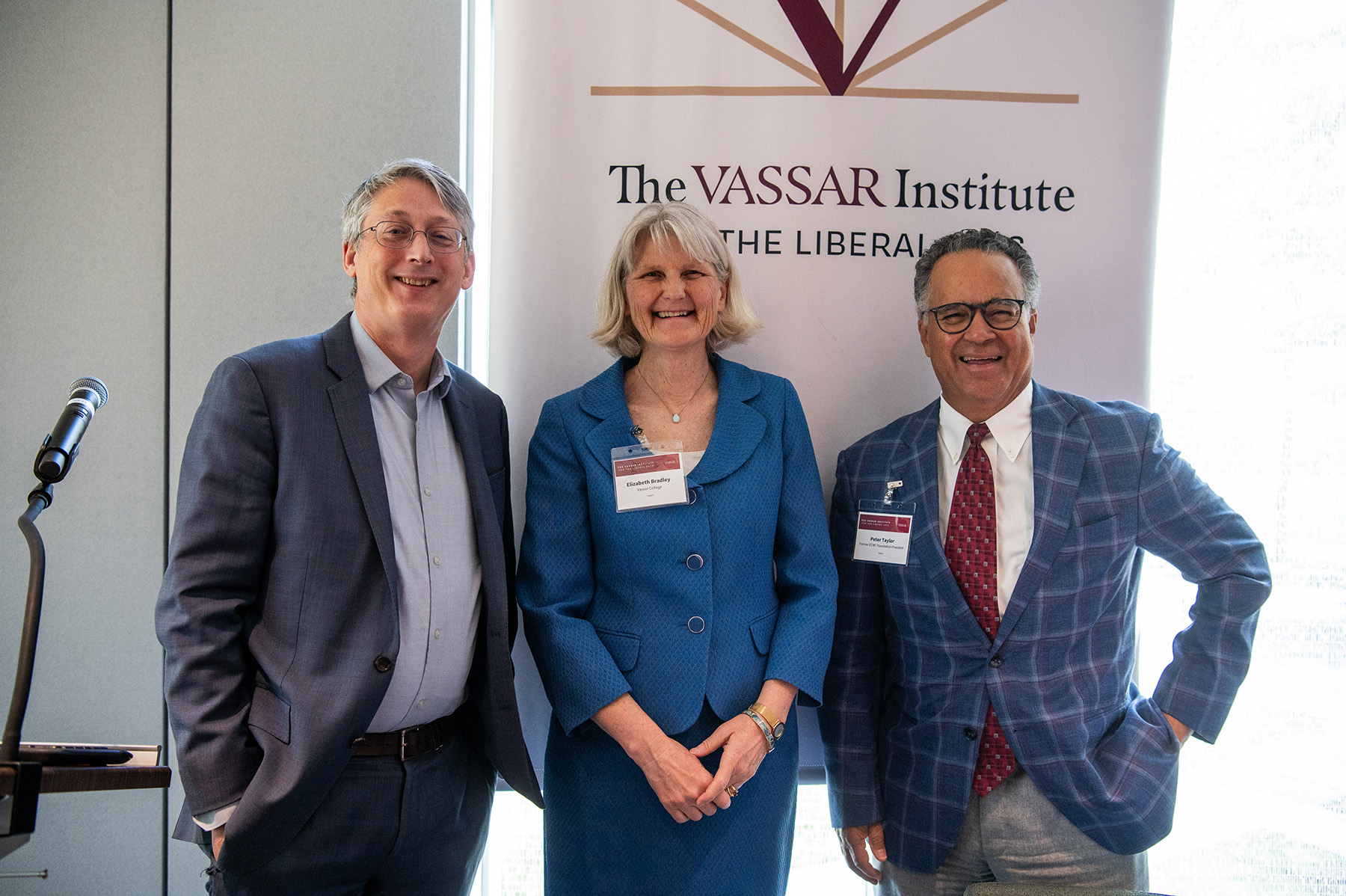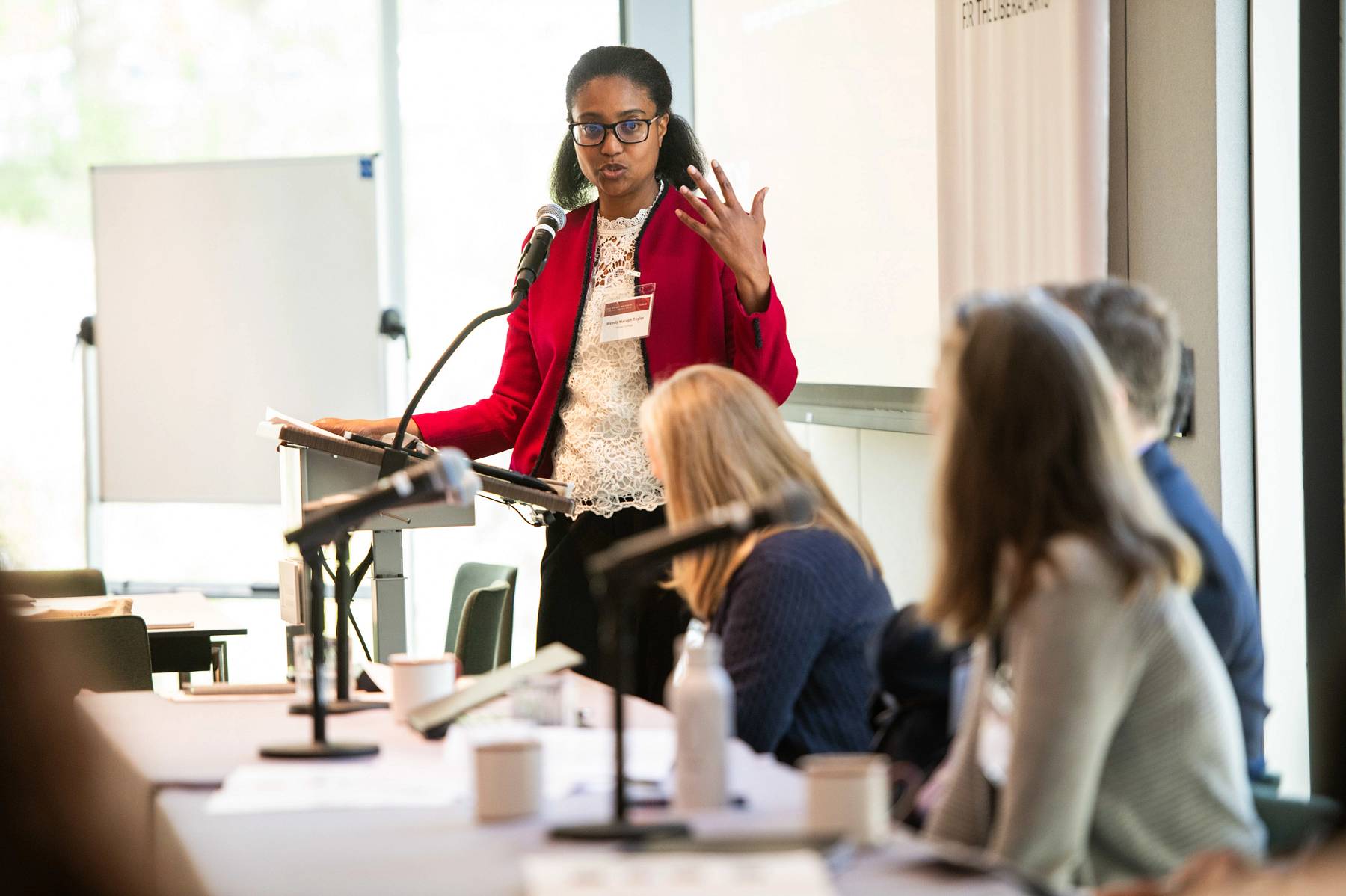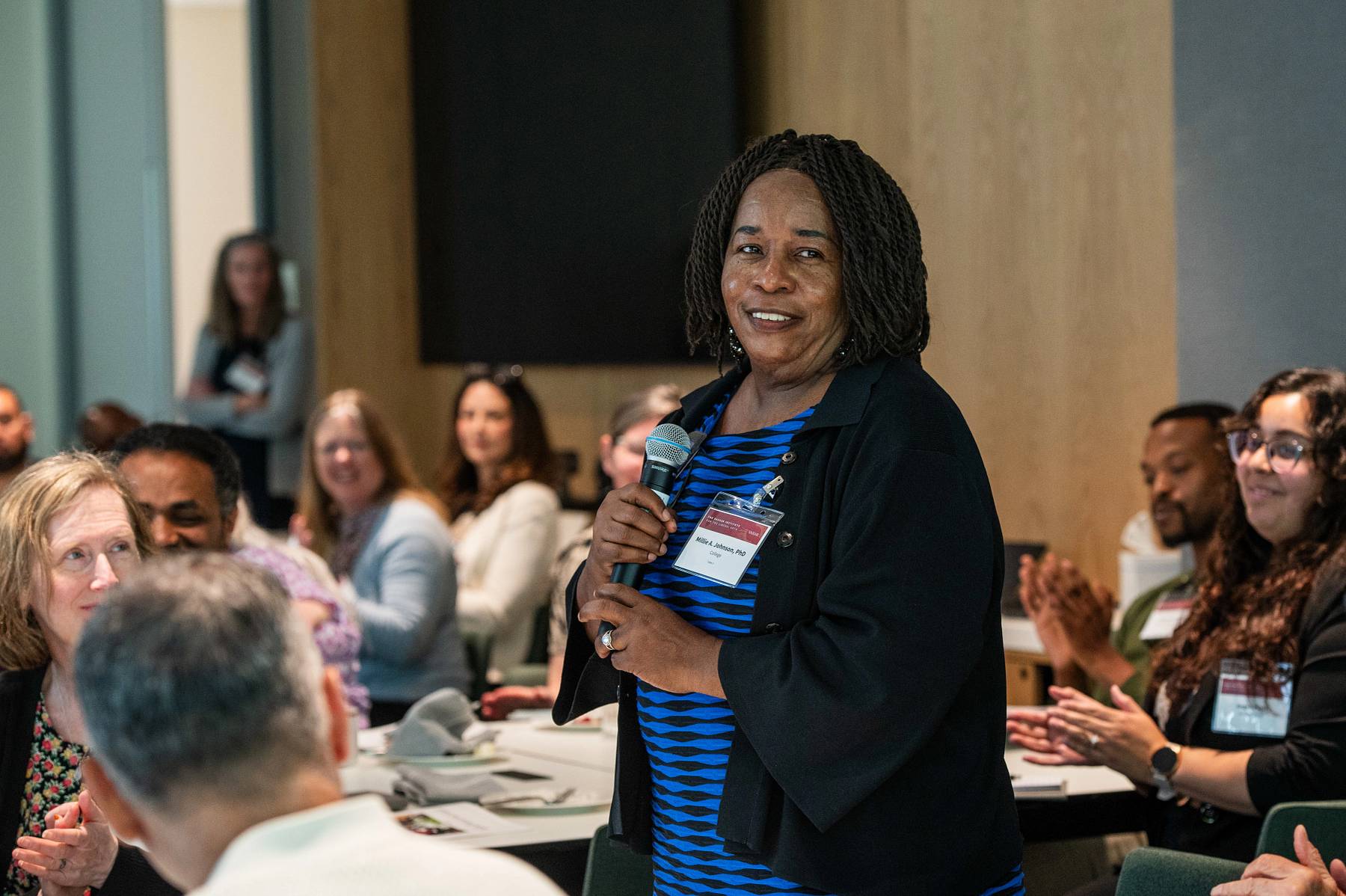Uplifting Education Summit at Vassar Delves Into Boosting College Completion Rates
In the spirit of increasing opportunity for students everywhere—at Vassar, in the local community, and across the country—the College hosted an all-day Education Summit at The Vassar Institute for the Liberal Arts on April 29 to explore ways to ensure that those who start college do end up with a degree. While graduation rates at Vassar typically exceed 90 percent, this is far from the case nationally: Only about half of U.S. college students graduate within six years of enrolling.

“We know that getting a college education is associated with higher income, better family stability, longer longevity—you actually live longer,” noted President Elizabeth H. Bradley. “So many ‘goods’ come from having a higher education degree, a bachelor’s degree, and so my mission is to try to get as many students who want to do that access to that opportunity.”
At the all-day event, Vassar researchers revealed the results of two studies that shed light on why some colleges succeed in graduating most of their students while others fail, and how programs like Vassar’s Exploring Transfer (ET), which mentors community college students interested in earning a four-year degree, can be part of the solution.
Wendy Maragh Taylor, Vassar’s Associate Dean for Student Growth & Engagement and the Principal Investigator on both studies, opened the conference by acknowledging the climate of hostility and suspicion in which higher ed must now function, while vowing that that climate would not deter Vassar from aiding students “farthest from opportunity” and working towards greater social and economic mobility.

“It’s a heartbreaking time for many of us. There are so many things being undone that people really worked hard for, for decades,” said Maragh Taylor. However, she said, a crisis presents “an opportunity to rise to the occasion.” She told the 75 educators, foundation leaders, and policymakers assembled that “we can, through conversation and reflection and partnering together, move forward with the hope to do something better and to continue to do the work that so many of us are committed to doing.”
Vassar researchers then detailed findings of a study funded by the Lumina Foundation that focused on “positive outliers”—colleges that achieve higher-than-expected graduation rates despite limited resources. They concluded that a focus on student mental health was key, along with creating a campus culture in which every voice is heard. “How expensive is it to show respect for marginalized voices on campus?” asked Professor and Chair of Education Christopher Bjork, a study author. “Not much at all—it takes emotional investment but not financial investment.”
The other study discussed, funded by ECMC Foundation, was a thorough evaluation of Exploring Transfer. Now nearly 40 years old, ET is an intensive five-week summer program for community college students, many of them from low-income backgrounds and/or who are the first in their families to go to college. The students live and study on the Vassar campus while getting help with applications to four-year schools.
Program Manager Charlotte Gullick, herself a first-generation college student, said the new study found that an amazing 70 percent of ET alums had gone on to earn a four-year degree, while an additional 15 percent were in the process of doing so. She also acknowledged three ET alums in the room including Millie Johnson ’03—a nonprofit executive and former Westchester Community College student, who not only went on to transfer to Vassar and complete her four-year degree but also earned two master’s degrees at Johns Hopkins University and a PhD in organizational leadership from the University of Chicago.

“Exploring Transfer opened my mind to what’s possible in the world,” Johnson said. “I had an incredible, transformational experience.”
ET is now being replicated at other colleges, including a joint program run by Haverford and Bryn Mawr in Pennsylvania. Administrators from these colleges thanked Vassar for preparing a toolkit, also with funding from ECMC Foundation, that can help get an ET-like program up and running at any campus—and also for individualized guidance. “We have to extend such gratitude to both Wendy [Maragh Taylor] and Charlotte [Gullick],” said Raquel Esteves-Joyce, Assistant Vice President for Student Diversity, Equity, and Access at Haverford College. “I can’t say enough about that support.”
That sentiment was echoed by Keith Shaw, Deputy Director of the Emma Bloomberg Center for Access and Opportunity at Princeton University. “We want to thank Vassar in particular, not just for inviting us here today, but the program I’m going to talk about is very much inspired by Exploring Transfer,” he said. “Vassar was the first place my colleagues and I called when we were interested in doing additional work with community college students in New Jersey.”
During a keynote conversation and two panels, summit attendees also heard from: James Kvaal, former Under Secretary of Education; Peter Taylor, former ECMC Foundation President; Stephen Handel, Chief of Staff and Senior Advisor to the President, ECMC Foundation; Janet Marling, Executive Director, National Institute for the Study of Transfer Students, University of North Georgia; Biniam Tesfamariam, Vassar Director of Institutional Research; Nicole Beveridge, Director of the Jeh Vincent Johnson ALANA Cultural Center; Cheryl Lynn Horsely, Chief Enrollment Officer, Bryn Mawr College; and Jesus Villalba, an Exploring Transfer alum.
There were also lots of questions and comments from audience members, including Jeszack Gammon, a Bard College career advisor, who said, “I want to continue in this energy of collaboration. We are not competitors—we’re working alongside each other. I’m excited to convene these conversations and to hear about different programs that colleagues are implementing at their institutions. It’s really inspirational.”